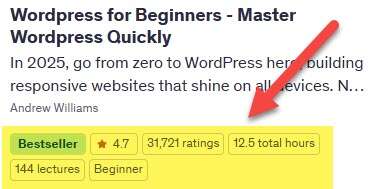WordPress block themes have revolutionized website design, offering unparalleled flexibility and creative control through Full-Site Editing (FSE). Since the introduction of the first block theme, Twenty Twenty-Two, each subsequent release—Twenty Twenty-Three, Twenty Twenty-Four, and Twenty Twenty-Five—has built upon its predecessor, refining functionality, enhancing design versatility, and simplifying the user experience. These themes have transformed the way users, from beginners to advanced developers, create and manage their websites. This article provides a detailed comparison of these four themes, highlighting their unique features, advancements, and the key improvements that make each release a milestone in WordPress's journey toward empowering creators worldwide.
Here’s a comprehensive comparison of the four WordPress block themes—Twenty Twenty-Two, Twenty Twenty-Three, Twenty Twenty-Four, and Twenty Twenty-Five—with references included for clarity.
1. General Overview
| Theme | Twenty Twenty-Two | Twenty Twenty-Three | Twenty Twenty-Four | Twenty Twenty-Five |
|---|---|---|---|---|
| Release Date | January 2022 | November 2022 | November 2023 | November 2024 |
| Main Focus | Introduction to block themes and FSE | Minimalism and style variations | Versatility for creative professionals | Advanced patterns and global design tools |
| Target Audience | Creative users, bloggers, and portfolio sites | Beginners and minimalist designers | Businesses, creatives, and bloggers | Broad audience (business, blog, events) |
2. Functionality Comparison
| Feature | Twenty Twenty-Two | Twenty Twenty-Three | Twenty Twenty-Four | Twenty Twenty-Five |
|---|---|---|---|---|
| Full-Site Editing (FSE) | First FSE theme, basic controls | Improved, with focus on minimalism | Enhanced with reusable templates | Advanced FSE tools like Grid Blocks |
| Style Variations | None | Introduced 10+ curated variations | Expanded with richer palettes | Nine highly flexible, multilingual styles |
| Block Patterns | Basic patterns for headers/footers | Expanded selection for key sections | Broader, more polished options | Over 70 patterns for diverse use cases |
| Typography Control | Basic | More options, including global styles | Advanced font and spacing settings | Global typography with language support |
| Ease of Use | Moderate, suitable for exploration | Simplified customization | Streamlined onboarding and setup | “Zoom Out” feature for layout management |
| Performance Enhancements | Basic | Optimized for minimalism | Faster load times, lazy loading | Improved performance across all devices |
3. Design Comparison
| Aspect | Twenty Twenty-Two | Twenty Twenty-Three | Twenty Twenty-Four | Twenty Twenty-Five |
|---|---|---|---|---|
| Default Aesthetic | Nature-inspired, organic shapes | Minimalist, clean, and neutral | Balanced, versatile designs | Polished and professional |
| Style Variation Aesthetics | Not available | Prebuilt styles, bold and minimalist | Broader appeal: modern, creative, elegant | Rich, cohesive variations for any purpose |
| Responsive Design | Basic | Improved scaling and adaptability | Refined for all devices | Fully optimized for mobile-first design |
| Use Cases | Blogs, portfolios | Blogs, basic websites | Small businesses, portfolios, blogs | Complex websites, events, eCommerce |
4. Ease of Use and Customization
| Feature | Twenty Twenty-Two | Twenty Twenty-Three | Twenty Twenty-Four | Twenty Twenty-Five |
|---|---|---|---|---|
| Onboarding Process | Basic | Simplified with style variations | Streamlined with organized tools | Guided setup and improved editor UX |
| Block Editor Complexity | Moderate | Beginner-friendly | More intuitive with broader options | Highly accessible with “Zoom Out” view |
| Global Styles | Manual adjustments required | Easier global customization | Simplified through templates and blocks | Advanced real-time previews and controls |
5. Accessibility and Performance
| Feature | Twenty Twenty-Two | Twenty Twenty-Three | Twenty Twenty-Four | Twenty Twenty-Five |
|---|---|---|---|---|
| Accessibility Features | Basic ARIA standards | Improved contrast and keyboard support | Enhanced, keyboard navigation improved | Over 65 accessibility updates |
| Performance | Moderate | Optimized for minimalism | Faster load times, lazy loading | Highly optimized for large-scale sites |
6. Use Cases and Audience Fit
| Theme | Best Suited For |
|---|---|
| Twenty Twenty-Two | Creatives and bloggers seeking flexibility to explore the new block theme capabilities. |
| Twenty Twenty-Three | Minimalist designers and new users looking for a clean slate to build upon. |
| Twenty Twenty-Four | Small businesses, creatives, and bloggers needing professional, ready-to-use designs. |
| Twenty Twenty-Five | A broader audience: businesses, event planners, content creators, and advanced users. |
7. Key Improvements Over Time
| Theme Transition | Key Advancements |
|---|---|
| Twenty Twenty-Two ? Twenty Twenty-Three | Introduction of Style Variations, more block patterns, and a minimalist aesthetic for simpler customization. |
| Twenty Twenty-Three ? Twenty Twenty-Four | Broader appeal with versatile patterns, improved typography controls, and streamlined onboarding for ease of use. |
| Twenty Twenty-Four ? Twenty Twenty-Five | Advanced design tools like the Grid Block, expanded block patterns, multilingual support, and significant UX upgrades. |
References
- Twenty Twenty-Two Release Overview: WordPress.org Blog
- Twenty Twenty-Three Improvements: Make WordPress Core
- Twenty Twenty-Four Design Features: Make WordPress Core
- Twenty Twenty-Five Theme Details: Make WordPress Core
- Block Editor and FSE Advancements: WP Tavern
- Performance and Accessibility Features: BD Themes Blog
- Typography Enhancements: WPLift
- Style Variations in Themes: WordPress Developer Handbook
This comparison and reference list ensures a clear understanding of each theme's features and how they progressed over time, with sources for further reading and validation.



